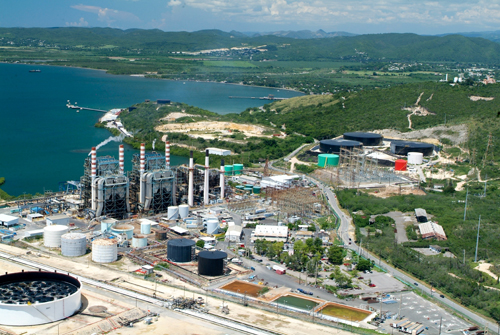
Located to the east of the Dominican Republic and to the west of the Virgin Islands, the Commonwealth of Puerto Rico is renowned for its exotic locations, white sandy beaches, mountains, valleys and various natural splendours. Classified by the World Bank as a high income economy and as the most competitive economy in Latin America by the World Economic Forum, it also boasts the highest GDP per capita of any other nation in the Caribbean.
It is also in Puerto Rico where the island nation’s electric power authority, PREPA, is working diligently to usher in a new era of energy usage that will greatly benefit not only Puerto Rico but the region as a whole for generations to come.
“The biggest challenge we face today as a nation is the high cost of electricity,” states Executive Director, Juan F. Alicea Flores. “As the only energy supplier in Puerto Rico it is our goal to reduce these costs. We currently have a number of important projects taking shape across Puerto Rico, one of which involves the development of the infrastructure necessary to receive natural gas, specifically the creation of a major floating storage facility and the converting or replacing of 14 power generation units.”
Founded in 1941, PREPA is responsible for providing electric energy to its customers in the most efficient, cost-effective and reliable manner possible. Today it produces, transmits and distributes virtually all the electric power used in Puerto Rico. PREPA’s workforce of approximately 8,240 employees are spread across various operational and support areas including generation, transmission and distribution, environmental protection and planning, finance and customer service, and human resources.
“Puerto Rico’s energy portfolio today highlights a high level of demand for petroleum fuels,” Alicea continues. “What we at PREPA want to do is reduce this dependence on oil and transfer it to cleaner, cheaper sources such as natural gas. We calculate that at present oil dependence amongst the population stands at around 55 percent, while dependence on natural gas stands at approximately 28 percent, coal 16 percent and renewable energy one percent. It is our aim to have a situation whereby in 2017 oil dependence has fallen as low as two percent and natural gas, which by that point will be the primary fuel in our generation systems, will have risen to 72 percent.”
Look closely and you will see that the moves made by PREPA are already starting to make a difference. At the beginning of 2013 the cost of energy on the island was recorded at 30 cents a kilowatt. Today it stands at 25.5 cents per kilowatt and Alicea is convinced that by the time PREPA has its entire network of infrastructure up and running in 2015 the cost will have fallen to 22 cents per kilowatt.
With such ambitious targets to aim for it will be of little surprise to find that PREPA is already hard at work putting the infrastructure it needs in place, with work currently focused on the south of the island. The south presents the best opportunity for PREPA to initiate the construction phase of its plans by the end of 2014, in advance of its target to start receiving natural gas by 2015. The north of the island in comparison is a much more complex area to work in, what with it being home to Puerto Rico’s major metropolitan centres and prime tourist locations. Nevertheless, PREPA is adamant that despite this, natural gas will be circulating the entire island by 2017.
From April 2015, Puerto Rico and the rest of the United States will welcome the introduction of new Federal Air Regulations, legislation that will target the amounts of particulate released into the atmosphere. In preparation for this PREPA also has a number of other clean energy projects in operation across the island. These include a 75MW wind farm which is integrated into its power network and a 20MW solar energy project. This is just the beginning however what with PREPA planning to have added an additional 400MW in renewable power by the end of 2014 alone.
“As well as recognising the need to integrate natural gas and existing renewable energy sources into our energy portfolio we also have one eye on the incorporation of less established technologies that we believe will grow in importance in the years to come,” Alicea explains.
One such example of these less established technologies is the use of Ocean Thermal Energy Conversion (OTEC). OTEC uses the temperature difference between cooler deep waters and warmer shallow waters to power heat engines which in turn produce electricity. “Due to the geographic nature of Puerto Rico we have an incredible opportunity to capitalise on this rapidly developing technology,” Alicea enthuses.
With a budget that exists independent from Puerto Rico’s central government, PREPA plans to invest as much as $1,500 million over the next five years into transforming the island’s energy mix, $300 million of which will be spent in 2014.
“PREPA has always employed the very finest technicians and individuals who specialise in identifying future trends and how best to approach them,” Alicea concludes. “It is these individuals who will continue moving PREPA forward in its integration of a more varied energy mix and I believe that when we look back on all this in 20 years’ time we will all be extremely proud of what we achieved and how that has impacted the lives of future generations of Puerto Ricans and their Caribbean neighbours.”
Written by Will Daynes, research by Abi Abagun



 PREPA-Americas-Oil&Gas-Apr14-Bro-s.pdf
PREPA-Americas-Oil&Gas-Apr14-Bro-s.pdf









